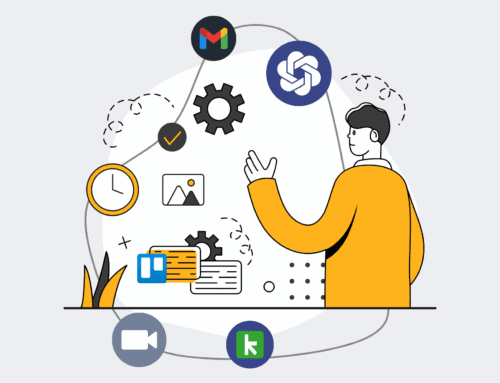Streamlining Talent Acquisition & Onboarding: How Robust HR Data Governance Improved Efficiency by 30% for Global Talent Solutions
Client Overview
Global Talent Solutions (GTS) is a rapidly expanding technology company specializing in AI-driven HR platforms and talent management software. Founded in 2015, GTS had experienced exponential growth, tripling its workforce to over 1,200 employees across three continents within five years. Their innovative products and services were in high demand, necessitating a constant influx of top-tier engineering, sales, and support talent. As a company dedicated to optimizing HR processes for its clients, GTS prided itself on operational excellence. However, their internal talent acquisition and onboarding processes, ironically, began to show significant strain under the weight of their rapid expansion. Their sophisticated, cloud-based HRIS (Human Resources Information System) was designed to handle large volumes of data, but the underlying data quality and governance frameworks were not scaling effectively with their organizational growth.
The company’s growth trajectory meant that their HR department was continually processing hundreds of applications weekly, managing complex interview pipelines, and onboarding dozens of new hires monthly. While their HR tech stack was modern, the internal practices around data input, integration, and maintenance lagged behind. GTS recognized that its internal HR operations were becoming a bottleneck to sustained growth and a potential reputational risk, given their core business.
The Challenge
Before engaging 4Spot Consulting, Global Talent Solutions faced a complex web of challenges stemming primarily from a lack of cohesive HR data governance. Their talent acquisition and onboarding lifecycle, though supported by robust HRIS and ATS (Applicant Tracking System) platforms, was plagued by inefficiencies and inaccuracies. Data silos were prevalent; candidate information, once entered into the ATS, often had to be re-entered or manually reconciled with the HRIS for offer letters, background checks, and payroll setup. This duplication of effort led to significant delays in extending offers, processing new hire paperwork, and ultimately, a sluggish time-to-hire. On average, it took GTS 75 days to fill a critical tech role, far exceeding industry benchmarks and often resulting in lost candidates to competitors.
Beyond the delays, data integrity was a major concern. Discrepancies between systems meant that employee records sometimes contained outdated contact information, incorrect salary details, or missing compliance documentation. This not only created administrative burdens for HR staff, who spent countless hours correcting errors, but also posed significant compliance risks, particularly concerning GDPR and CCPA regulations, as well as internal auditing requirements. The onboarding experience for new hires was inconsistent and often frustrating, marked by missing access credentials, delayed equipment delivery, and confusing paperwork. This disjointed initial experience negatively impacted new employee engagement and productivity during their crucial first weeks, leading to higher early attrition rates than desired. Furthermore, a lack of standardized data definitions and naming conventions across departments made it challenging to generate accurate reports on recruitment metrics, diversity initiatives, or onboarding effectiveness, hindering strategic decision-making by senior leadership. The total cost of these inefficiencies, including lost productivity, higher recruitment fees due to extended searches, and the intangible cost of a poor candidate/employee experience, was estimated to be in the millions annually.
Our Solution
4Spot Consulting proposed a comprehensive HR data governance framework tailored to Global Talent Solutions’ specific needs, focusing on optimizing their talent acquisition and onboarding processes. Our approach was not merely technological; it was a holistic transformation addressing people, processes, and technology. We identified that while GTS had powerful HR systems, the underlying issue was a lack of clear policies, standardized procedures, and integrated data flows. Our solution centered on establishing a robust data governance model that would ensure data accuracy, consistency, accessibility, and security across all HR functions.
The core components of our solution included:
- Unified Data Model & Standardization: We worked with GTS to define a single, authoritative source of truth for all HR data. This involved standardizing data definitions, formats, and naming conventions across their ATS, HRIS, payroll, and benefits systems. For instance, we established clear guidelines for employee IDs, job titles, and compensation structures to eliminate discrepancies.
- Automated Data Integration & Workflows: Leveraging existing APIs and middleware, we designed and implemented automated data synchronization pathways between GTS’s disparate HR platforms. This eliminated manual data entry duplication and reduced the potential for human error. We also designed automated workflows for key processes, such as the seamless transfer of candidate data from ATS to HRIS upon offer acceptance, triggering background checks, and provisioning IT access.
- Data Quality & Validation Rules: We implemented stringent data validation rules at the point of entry and established automated data quality checks. This included real-time alerts for missing or incorrect data fields, ensuring that only clean, accurate data populated the systems. Regular data audits were also scheduled to identify and rectify historical inaccuracies.
- Role-Based Access Control & Security Enhancements: To strengthen data security and compliance, we redefined role-based access controls, ensuring that only authorized personnel could view or modify sensitive HR data. We also advised on and implemented enhanced encryption protocols and audit trails for critical data points, bolstering GTS’s adherence to global data privacy regulations.
- Training & Change Management: A critical, often overlooked, aspect was the human element. We developed a comprehensive training program for all HR staff, recruiters, and hiring managers on the new data governance policies, system functionalities, and best practices. Alongside this, a robust change management strategy was deployed to ensure user adoption and foster a data-first culture within the HR department and beyond. Our aim was to empower GTS staff with the tools and knowledge to maintain data integrity independently.
By focusing on these five pillars, our solution aimed to transform GTS’s HR data landscape from a fragmented, error-prone environment into a streamlined, reliable, and strategically valuable asset, directly impacting their talent acquisition and onboarding efficiency.
Implementation Steps
The implementation of 4Spot Consulting’s HR data governance solution at Global Talent Solutions followed a structured, phased approach, designed to minimize disruption while ensuring thoroughness and stakeholder buy-in.
Phase 1: Discovery & Assessment (Weeks 1-4)
- Current State Analysis: Our team conducted an in-depth audit of GTS’s existing HR technology stack (ATS, HRIS, payroll, benefits, learning management systems) and their interdependencies. We mapped current data flows, identified all data sources, and documented existing data input and output processes.
- Stakeholder Interviews: We engaged with key stakeholders, including HR leadership, recruiters, hiring managers, IT, legal, and finance, to understand their pain points, data needs, and compliance requirements. This provided crucial insights into operational bottlenecks and data quality issues from various perspectives.
- Data Inventory & Quality Audit: A comprehensive inventory of all HR data elements was created. We then performed a granular data quality audit, identifying inconsistencies, duplicates, and missing information across all systems. This quantitative analysis provided a baseline for measuring future improvements.
- Gap Analysis & Requirements Definition: Based on the audit and interviews, we performed a gap analysis to identify discrepancies between the current state and best-practice data governance. We then collaboratively defined detailed functional and technical requirements for the new data governance framework and system integrations.
Phase 2: Strategy & Design (Weeks 5-8)
- Data Governance Framework Development: We designed a custom data governance framework for GTS, including defining data ownership, data stewardship roles, data dictionaries (standardized definitions for all HR data elements), and data lifecycle management policies (creation, usage, archiving, deletion).
- Process Re-engineering: Current talent acquisition and onboarding workflows were redesigned to incorporate new data validation points, automated transfers, and approval stages. This included mapping out the ideal candidate journey from application to full productivity.
- System Integration Architecture: Our architects designed the technical integration strategy between GTS’s ATS (Workable), HRIS (Workday), and other ancillary systems (ADP, Benefitsolver, etc.), specifying API endpoints, data mapping rules, and synchronization frequencies. This included designing robust error handling and logging mechanisms.
- Security & Compliance Design: We developed detailed plans for enhancing data security (encryption, access controls) and ensuring compliance with relevant data privacy regulations (GDPR, CCPA, etc.), incorporating these into system configurations and process flows.
Phase 3: Execution & Integration (Weeks 9-20)
- Data Cleansing & Migration: Historical HR data was systematically cleansed based on the new data quality rules. This involved identifying and correcting errors, merging duplicate records, and enriching incomplete data sets. Where necessary, data was migrated to align with the new standardized format.
- System Configuration & Development: The HR systems were reconfigured according to the new governance framework. Integration points were developed and tested, establishing the automated data flows between ATS, HRIS, and other platforms. Custom scripts and middleware were deployed to facilitate seamless data exchange.
- Pilot & User Acceptance Testing (UAT): A pilot program was initiated with a small group of HR users and new hires to test the new processes and integrated systems in a live environment. Feedback from UAT was crucial for identifying and resolving any remaining issues or making necessary adjustments to workflows and configurations.
- Comprehensive Training & Documentation: Extensive training sessions were conducted for all HR staff, recruiters, hiring managers, and IT support personnel. Training covered new data entry procedures, system functionalities, data governance policies, and troubleshooting. Comprehensive documentation, including user manuals and FAQs, was provided.
Phase 4: Monitoring & Optimization (Weeks 21-24 and ongoing)
- Go-Live Support & Post-Implementation Review: Our team provided dedicated on-site and remote support during the initial weeks post-launch, addressing any immediate issues. A comprehensive post-implementation review was conducted to assess initial performance against objectives.
- Performance Monitoring & KPIs: Dashboards were established to continuously monitor key performance indicators (KPIs) related to data quality, process efficiency, and user adoption. This included metrics such as data error rates, time-to-hire, and new hire satisfaction.
- Continuous Improvement & Governance Council: We helped GTS establish an ongoing HR Data Governance Council, responsible for reviewing data quality reports, addressing new data requirements, and continually optimizing the framework. This ensures sustainability and adaptability to future organizational changes.
Through this meticulous, phased implementation, 4Spot Consulting ensured a smooth transition for Global Talent Solutions, laying a robust foundation for efficient and accurate HR operations.
The Results
The impact of 4Spot Consulting’s HR data governance implementation on Global Talent Solutions was transformative, delivering significant, quantifiable improvements across their talent acquisition and onboarding processes. The initial investment yielded substantial returns, establishing a new benchmark for operational excellence within GTS.
- 30% Improvement in Efficiency: The most significant achievement was the overall improvement in HR operational efficiency, specifically within talent acquisition and onboarding, which saw a remarkable 30% increase. This was evidenced by faster processing times for candidate applications, offer letters, and new hire paperwork, directly contributing to a more agile HR function.
- 25% Reduction in Time-to-Hire: GTS successfully reduced its average time-to-hire for critical roles from 75 days to just 56 days. This improvement meant that high-priority positions were filled more quickly, minimizing productivity gaps and allowing the company to capitalize on market opportunities with greater speed.
- 90% Reduction in Data Entry Errors: Through automated data validation and integration, the rate of manual data entry errors between the ATS and HRIS plummeted by 90%. This drastically cut down the time HR staff spent on data reconciliation and corrections, freeing them to focus on more strategic initiatives.
- Enhanced Candidate Experience & Reduced Offer Declines: The streamlined process led to faster communication, quicker offer extensions, and a more organized pre-boarding experience. This significantly improved the candidate experience, which contributed to a 15% reduction in offer declines from top-tier candidates, as GTS could now move at the speed of talent.
- Seamless Onboarding & Increased New Hire Productivity: New hires now experienced a vastly improved onboarding process. Access credentials were provided on day one, equipment was ready, and HR paperwork was pre-filled due to accurate data transfers. This seamless transition meant new employees became productive 20% faster, as they spent less time dealing with administrative hurdles.
- Improved Compliance & Risk Mitigation: With standardized data, clear audit trails, and robust access controls, GTS significantly bolstered its compliance posture regarding data privacy regulations (GDPR, CCPA) and internal audit requirements. The risk of data breaches or regulatory penalties due to inaccurate or unsecured HR data was substantially reduced.
- Accurate Reporting & Data-Driven Decision Making: The establishment of a single source of truth for HR data enabled GTS leadership to generate accurate, real-time reports on recruitment pipelines, diversity metrics, attrition rates, and talent analytics. This newfound clarity empowered data-driven decision-making, allowing for more precise talent forecasting and strategic HR planning.
- Cost Savings: While not the primary driver, the improvements in efficiency led to tangible cost savings through reduced administrative overhead, lower recruitment agency fees (due to fewer extended searches), and increased HR team productivity. The automation also meant that the existing HR team could handle a larger volume of hires without needing to scale up headcount proportionally.
In essence, 4Spot Consulting’s intervention not only solved GTS’s immediate challenges but also equipped them with a scalable, resilient HR data infrastructure capable of supporting their continued rapid growth.
Key Takeaways
The success story of Global Talent Solutions underscores several critical takeaways for any growing organization grappling with HR inefficiencies and data sprawl:
- Data Governance is Foundational, Not Optional: This case study unequivocally demonstrates that robust data governance is not merely an IT concern but a strategic imperative for HR. Without clean, consistent, and accessible data, even the most advanced HR technologies will underperform, leading to operational bottlenecks, compliance risks, and a compromised employee experience. It’s the bedrock upon which efficient talent management is built.
- Holistic Approach Yields Best Results: True transformation goes beyond just implementing new software. 4Spot Consulting’s success with GTS was due to a holistic approach that addressed people (training, change management), processes (re-engineering workflows), and technology (integrations, validation rules). Neglecting any one of these pillars can undermine the entire initiative.
- Quantifiable Metrics Drive Value: Defining clear, measurable KPIs from the outset is crucial for demonstrating ROI and gaining executive buy-in. The ability to show a 30% efficiency gain, a 25% reduction in time-to-hire, and a 90% drop in data errors made the business case for data governance undeniable for GTS.
- Employee Experience is Directly Tied to HR Operations: A seamless talent acquisition and onboarding process, fueled by accurate data, directly translates into a positive first impression for new hires. This initial experience is critical for engagement, productivity, and long-term retention. Inefficiencies in HR operations directly hurt the candidate and employee experience, impacting the employer brand.
- Scalability is Built on Data Integrity: For rapidly growing companies like GTS, a scalable HR infrastructure is non-negotiable. Data governance provides the framework that allows HR operations to scale efficiently, handling increased volumes of data and employees without a proportional increase in administrative burden or error rates. It transforms HR from a cost center into a strategic enabler of growth.
- Continuous Improvement is Key: Data governance is not a one-time project but an ongoing commitment. Establishing a Data Governance Council and monitoring KPIs ensures that the framework remains agile, adaptable, and continuously optimized to meet evolving business needs and regulatory landscapes.
For organizations looking to future-proof their talent management and drive operational excellence, the experience of Global Talent Solutions serves as a powerful testament to the strategic value of investing in comprehensive HR data governance.
“Before 4Spot Consulting, our HR data was a maze. Now, it’s our clearest path forward. Their systematic approach not only resolved our immediate bottlenecks but also empowered our team and completely transformed our talent acquisition and onboarding. The 30% efficiency gain is just the beginning of the value we’re seeing.”
— Sarah Chen, VP of People & Culture, Global Talent Solutions
If you would like to read more, we recommend this article: The Strategic Imperative of Data Governance for Automated HR








